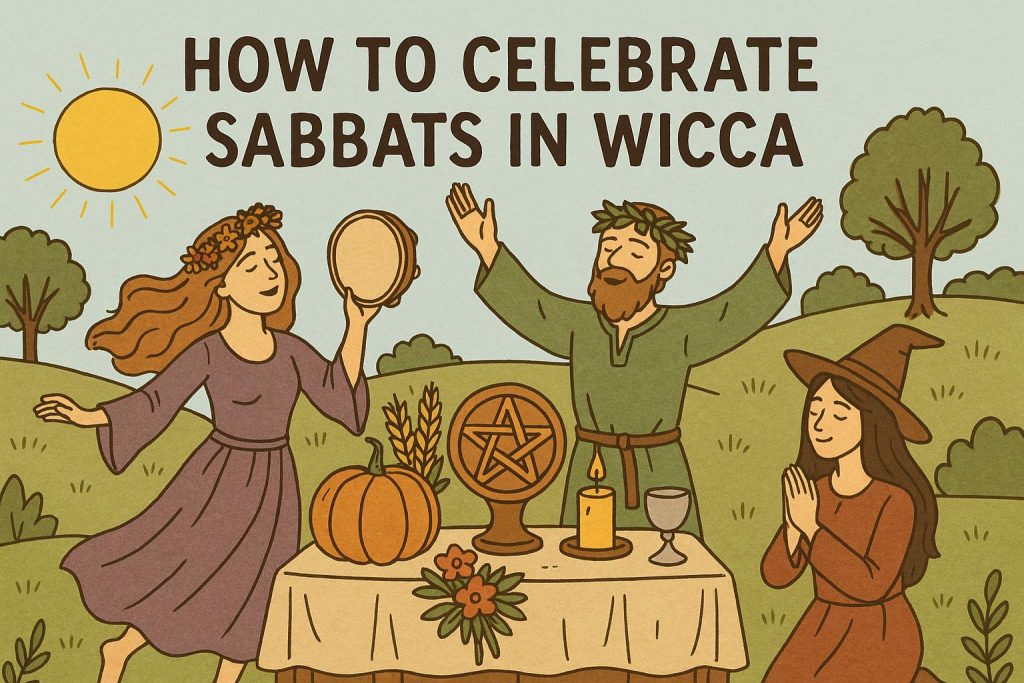
Understanding Sabbats in Wicca
In Wicca, the Sabbats are crucial elements that form the Wheel of the Year. These festivals are more than just ceremonial occasions; they embody the very essence of the Earth’s cyclical nature and highlight the ever-changing seasons and aspects of life that Wiccans strive to honor and understand at a deeper level. Recognized as eight distinctive celebrations, Sabbats align with the solar events of equinoxes and solstices and the midpoints between these significant solar occurrences, commonly known as cross-quarter days. Through a better understanding of these Sabbats, one can appreciate the interplay between nature’s cycles and Wiccan spiritual practices.
Major and Minor Sabbats
The eight Sabbats are categorized into Major and Minor Sabbats, each type carrying its own historical significance and associated traditions. The Major Sabbats—Samhain, Imbolc, Beltane, and Lughnasadh—have deep roots in traditional Celtic festivals, with close connections to agricultural cycles, marking periods of sowing, growth, and harvest. The Minor Sabbats—Yule, Ostara, Litha, and Mabon—are more solar-aligned, occurring on the solstices and equinoxes. These are times when the balance between day and night is significant, and celebrations often reflect themes of equilibrium, renewal, and the natural transitions of the earth.
Samhain
Samhain, celebrated from sunset on October 31st to sunset on November 1st, signifies the end of the harvest season and the onset of winter. Regarded as a time when the veil between the living and the spirit worlds is thinnest, Wiccans often remember ancestors and the deceased. Traditions may include setting a place at the table for those who have passed or lighting candles to honor their memory. Such rituals not only pay homage to ancestors but also acknowledge the dark half of the year, ushering in reflection and introspection. For more details on specific Samhain celebrations, consider exploring resources that offer deeper insights into ritual activities.
Yule
Observed around December 21st, Yule coincides with the Winter Solstice, representing the longest night of the year. This celebration focuses on the rebirth of the sun and the return of light. Wiccans may engage in the lighting of candles or Yule logs as symbols of the sun’s rebirth. Decorations like evergreens, mistletoe, and holly serve as reminders of life and endurance amidst the cold and dark of winter. Through such practices, Wiccans embrace hope and the cyclical nature of light returning, providing warmth and energy to the Earth.
Imbolc
Imbolc, typically celebrated on February 1st or 2nd, marks the first stirrings of spring and is a time of purification and renewal. This Sabbat is associated with the goddess Brigid and symbolizes light returning to the world, making it a time for candle rituals and spring cleaning. These acts of purification reflect a desire to usher in fresh beginnings and prepare for the growth that spring will bring. Those wishing to deepen their practice can explore guides on specific Imbolc rituals, which showcase the various ways to celebrate renewal and returning light.
Ostara
Corresponding with the Spring Equinox around March 21st, Ostara celebrates a time of balance; day and night are equal in length. This promotes themes of equilibrium and new beginnings, as nature demonstrates a balance between light and dark. Wiccans might engage in activities such as planting seeds or decorating eggs as part of Ostara rituals. Both acts are symbols of fertility, growth, and the potential inherent in the start of the year’s lighter half.
Beltane
Beltane, celebrated on May 1st, heralds the height of spring and the advent of summer. Known for emphasizing fertility and abundance, this Sabbat traditionally involves dancing around a Maypole, lighting bonfires, and holding fertility rituals. Such celebrations underscore themes of growth, unity, and the vibrant energy of life, highlighting an interconnectedness with nature’s burgeoning fertility and the blessing of health and prosperity.
Litha
Occurring around June 21st, Litha, or the Summer Solstice, marks the longest day of the year. It celebrates the power of the sun at its peak. Sun-themed rituals, including the lighting of bonfires, often occur, illuminating the earth and symbolizing the sun’s strength. Herb gathering is another common Litha practice, as it is believed that herbs are most potent at this time, reflecting nature’s full bloom.
Lughnasadh
Lughnasadh, observed on August 1st, marks the first harvest festival and provides a time for gratitude for the land’s abundance. Celebrations often include baking breads, holding community feasts, and performing thanksgiving rites to honor the elements that allowed the harvest to come to fruition. In doing so, Wiccans reaffirm their connection to and respect for the Earth’s generosity, ensuring its continuation through expressions of thanks.
Mabon
Celebrated around September 21st, Mabon coincides with the Autumn Equinox. It acknowledges the arrival of the second harvest and the balance of light and dark. Activities associated with Mabon may include crafting with fallen autumn leaves, winemaking, or gratitude rituals. Wiccans reflect on Mabon as a moment of giving thanks for the abundance received throughout the year while also recognizing the descent into a quieter, more introspective phase of the year.
Conclusion
Engaging with Sabbats in Wicca through both personal and communal rituals facilitates a deep connection with the natural world and its cyclical changes. Each Sabbat provides an opportunity to engage with specific energies and themes pertinent to the time of year. By understanding and participating in these celebrations, practitioners can deepen their spiritual practice, cultivating a profound appreciation for the rhythm of nature and the lessons it imparts. This ongoing practice fosters mindfulness of the Earth’s cycles and the living connection Wiccans maintain with the world around them.
